Palatability Evaluation, DNA Analyses, and Functional Processing of Rice
Introduction
Rice, wheat, and maize are the most important crops in the
world. Rice consumers need not only enough amount of rice but also
high-quality rice grains. The many rice cultivars grown in the world
vary markedly in their cooking, sensory, and processing quality
[1]. Consumers are heterogeneous with respect to their perceived
differentiation of rice quality among regions, countries, cities, and
urbanization levels [2] The rice quality depends on various aspects
such as consumer safety, nutrition, appearance, price level, and
palatability. Because rice is eaten every day, it is indispensable that
it should be safe to eat and highly nutritious. Furthermore, because
rice provides income for farmers and is prepared, milled, and sold
by wholesalers and retailers, the rice yield and price are extremely
important to the farmers. Consumers have been asking for more
palatable rice because they have recently become more affluent.
Calingacion et al engaged local experts across the world and they
showed that there are at least 18 different quality types of rice that
are favored around the world and this complexity immediately
reveals the extent of the specificity of consumer preference [3].
As described by Juliano, rice quality evaluation includes eating
quality assays for sensory evaluation and aroma testing, as well as
physical property measurements using Instron, Texturometer, or
Tensipresser etc., which were highlighted as indirect methods, in
addition to amylose content, starch gelatinization temperature, gel
consistency, amylography, and protein content determination [4].
Ohtsubo et al. reported on the quality assay of rice using traditional
and novel tools, such as the measurements of amylose, physical
properties and pasting properties [5].
Starch comprises the most abundant component in rice grain and con-sists of am- ylose (linear ƒ¿-1,4-glucan) and amylopectin (highly branched molecule with ƒ¿-1,4 bonds and ƒ¿-1,6 bonds). Apparent amylose content (AAC) is measured by the iodine colorimetric method [6] and high-AAC rice becomes harder and non-sticky on cooking [1,6,7]. Lian et al. investigated on the identification of the main retrogradation-related properties of rice starch and reported that retrogradation rates of different rice starch showed significant positive correlation with proportion of the chains (DP>10) in amy- lopectin [8]. Protein content is another extremely important factor that determines rice quality [1]. Protein contents are measured by Kieldahl method, combustion method or NIR method. As Juliano [8] and Bhattacharya [9] pointed out, the physical properties of cooked rice grains are important determinants of the eating quality of rice. The pasting properties of rice are useful indicators in the quality assay of cooked rice, rice cake, rice bread, rice extrudate, etc. In several countries, such as Australia, China, Japan, and the United States, the RVA has become the standard method with which the rice processing industry and breeding programs determine rice pasting properties [1]. A rapid, simple, and accurate method is required to evaluate rice. Therefore, if a such novel method could be developed, it would become a great help to the producers and the consumers of rice all over the world. Sensory testing is the fundamental method that evaluates the eating quality of rice grains. The members of a trained panel taste cooked rice samples and give scores based on appearance, flavor, taste, hardness, stickiness, and overall sensory evaluation.
Sensory Test and Physicochemical Measurement [10]
Sensory Test: Sensory testing is the fundamental method that evaluates the eating quality of rice grains. The members of a trained panel taste cooked rice samples and give scores based on appearance, flavor, taste, hardness, stickiness, and overall sensory evaluation. The test results can be expressed as numerical values and treated statistically; there are disadvantages to using this test. The results differ depending on the preference of panel members, and the results cannot be directly compared if the time or country differs.
Physicochemical Evaluations: Physicochemical evaluation is only indirect evaluation of rice palatability, its results are common all over the world if we use the same method and apparatus. Physicochemical measurements include component analysis, such as protein, amylose, and fibers, pasting properties of starch, texture measurements of the cooked rice grains, etc. For the sake of estimating the total palatability, statistical treatment is adopted using the results of each measurement as the variables. Multiple regression analysis, principal com-ponent analysis, and PLS analysis are very useful to clarify the characteristics of the rice samples. Recently, spectrophotometric analyses, such as NIR or visible-light spectrometer, are utilized to estimate the chemical components and to develop the estimation formulae for palatability. “Taste Analyzer” is an example of the NIR system as a non-destructive estimation apparatus for palatability of rice grains. Examples of sensory test and physico-chemical evaluation of rice palatability are shown in Table 1.
Amylose Content and Amylopectin Molecular Structure: Amylose content is the most important factor that determines rice quality because starch shares approximately 85% (w/w, dry basis) of the milled rice grains. Because North- east Asian consumers prefer soft and sticky cooked rice, low amylose rice is the dominant rice sold in the rice market. Amylose content is generally measured by the iodine colorimetric method of Juliano [6]. Li, et al. [10] reported that stickiness of cooked rice is affected not only by AAC but also the proportion of short amylopectin chain. They found that the autoclave cooking, which is used to produce sticky “convenience rice”, effects on sensory properties and increase leached amylopectin [11].
Protein Content: Protein content is another extremely important factor that determines the eating quality of rice. Cooked rice with high protein content tends to be hard and non-sticky. Protein content is measured by the Kieldahl or the combustion method. It can be measured by NIR method (Near Infrared Reflectance) easily and non-destructively. Recently, not only protein content, but also molecular compositions of protein, such as glutelin or prolamin, is reported to affect the quality of rice [12,13].
Gelatinization Properties Using an RVA: The RVA (Figure 1) provides various information, for examples, as indicators in cerealbased products, on apparent viscosity of cake batters and quality of flour for cake making, about interactions between starch and other compounds, on extruded products and the measurement of the degree of cook, as quality indicators for hydrocolloids and fibers, for simulation and monitoring of processes, and on enzymatic reactions [14]. Comejo and Rosell used RVA in the research on the influence of germination time of brown rice in relation to flour and gluten free bread quality [15]. Although the Brabender Viscoamylograph has been used to assess rice pasting properties [1], Blakeney, et al. [16] and Champagne, et al. [17] showed that the RVA is useful in determining the “degree of cook” after processing of rice into precooked and extruded products. Yao et al. reported that the high temperature during ripening of rice decreased setback and trough viscosities and increased breakdown, implying that the pasting properties were slightly better [18]. Zhu et al. investigated the effect of soaking and cooking on structure formation of cooked rice through thermal properties, dynamic viscoelasticity, and enzyme activity, in which they used RVA for the measurements of enzyme activity [19].
Nakamura et al. developed a novel estimation formula for AAC
and resistant starch (RS) based on the pasting properties measured
by an RVA [20], enabling evaluation of the starch properties and
processing suitability of material rice flours. Furthermore, we
developed novel estimation formulae for oleic and linoleic acid
contents based on the pasting properties of brown rice flours using
an RVA, making it possible to predict easily and rapidly the nutritive
and bio-functional characteristics of material rice [21]. To evaluate
the pasting properties, the behavior of rice starch at temperatures
higher than 100 ‹C should be examined to elucidate the changes in
rice quality after cooking and processing, such as extrusion cooking
[22] or super-heated moisture treatment [23]. Recently, Nakamura
et al. reported about the comparison of the three different programs
and estimating the hardness and retrogradation of cooked rice
based on its pasting properties using a novel high-temperaturetype
programs [24]. They have made improvements to analyzing
pasting properties in a new program using RVA 4800 (Figure 2),
and novel estimation formulae were developed in this paper for
estimates of the retrograded hardness of cooked rice H1(R) and
the degree of retrogradation H1(RD), which has led to an easy and
rapid evaluation of the cooking qualities of various rice samples.
The following are the main features;
1. Among the three kinds of RVA programs, Program 2 (120‹C)
showed the highest correlations with starch microstructure
(Amax), RS, physical properties, and degree of retrogradation
of the cooked rice grains.
2. The novel Program 2 (120 ‹C) showed high determination
coefficients for hard-ness and the degree of retrogradation of
cooked rice grains.
3. The novel RVA Program 2 enables us to estimate easily and
rapidly the cooking and processing characteristics of various
kinds of rice cultivars. Commercial rice of Japonica rice
cultivars Consistency (93°C) Consistency (120°C) Consistency
(140°C).
Fat Acidity: Fat acidity is a good index to measure the quality deterioration of rice grains during storage. In Japan, newlyharvested rice is preferred to aged rice because consumers like soft and sticky cooked rice. Ohtsubo proposed a new colorimetric method to accurately measure fat acidity [25].
Cooking Quality Test [26]: A cooking quality test was developed by the researchers of USDA in 1950s. An expanded volume and water uptake ratios are measured after cooking rice samples in excess amounts of water. Dissolved amylose is measured by color generation by combining iodine and amylose.
Physical Properties of Cooked Rice Grains: Physical properties of cooked rice grains, such as hardness and stickiness, are measured by a Texturometer, Tensipresser, Texture analyzer, or Rheolograph-micro. Okabe reported the texture measurement of cooked rice and its relationship to eating quality using a Texturometer [27]. Low-compression and high-compression test using a Tensipresser [28] is shown in Figure 3. Recently, Texture Analyser has been used for measuring the physical properties of the cooked rice [29] or the parboiled rice [30]. And dynamic viscoelasticity gives valuable information for the elucidation of the relationship between the texture and the molecular structure of starch, which showed that gconsistency coefficient h affected hardness and tanƒÂ affected stickiness of cooked rice grains [31].
Palatability Estimation Formula: Chikubu et al. developed a new equation to estimate the palatability of rice grains using a multiple regression analysis based on physico-chemical measurements, such as an amylograph viscosity profile, protein assay, and iodine blue value measurements [32]. The formula showed a high correlation between the results of a sensory test (R = 0.84) and the rice samples that will be harvested next year.
Application of Near Infra-Red Spectroscopy to Evaluate Rice Quality: Near Infra-red spectroscopy is a rapid, non-destructive, and extremely promising technique to evaluate qualities of the rice grains. In Japan, NIR spectroscopy was initially used to determine the protein and moisture content of the rice flours. Satake Co. Ltd subsequently combined NIR and palatability estimation formula and developed a new system called “Taste Analyser”.
Protein Content: Iwamoto et al. reported that NIR was equally sensitive to both rice and wheat proteins. A standard error of estimation (SEP) was decreased for calibrations using a derivative absorbance. However, the derivative procedure may possibly make an increment bias in cases that predict unknown sam-ples [33]. Inatsu utilized NIR spectroscopy to select palatable rice cultivars by measuring the protein content of rice because low protein rice is preferred in Japan because of their palatability [34].
Estimation of Rice Amylose Contents by NIR [35]: Japanese rice breeders have tried to develop palatable rice cultivars by selecting low amylose rice; however, the amylose contents among Japanese rice grains are not significantly different (15% - 20%). NIR spectroscopy can easily compare protein and moisture; however, it does not easily differentiate amylose from amylopectin. Villareal and Delwiche had already developed excel-lent calibrations to detect amylose in various rice samples through NIR spectroscopy [36,37]. Japanese consumers request high-performance calibration for the measurement of narrow range amylose of Japanese rice cultivars. Ap-parent amylose content (AAC) analysis is a rapid and simple technique uses NIT spectroscopy. It was developed based on the near infrared transmission spectra and the reference value of AAC determined by the iodine colorimetric method. The wide AAC range (0%-35.3%) PLS model was inadequate for the accurate prediction of the extremely narrow range of the AAC (13.2% 20.7%) of Japanese milled rice samples. The statistics performed on the 11 factor PLS model for the extremely narrow range of AAC analyses was 0.78, 0.74, and 2.01 in SECv, r2, and RPD, respectively. The performance of this model was 1.25 and 0.49 for SEP and r2, respectively, on the validation set. The previous models developed a wide range of AAC samples, which were difficult to apply to the narrow range of AAC rice. The present AAC analysis technique is based on NIT spectroscopy, which can discriminate between the extremely narrow differences in AAC of Japanese milled rice in the same sub family.
Proposal as Novel Physicochemical Measurement, Iodine Colorimetric Analysis, for Rice Palatability Evaluation [39]
Introduction: As described in section 3, physicochemical test is very important because it is time- saving and labor-saving objective test for rice palatability. Main component of rice grains is starch, therefore, amylose content affects eating quality [6]. Low-amylose rice generally be-comes soft and sticky after cooking, whereas high-amylose rice be-comes hard with fluffy separated grains [40]. The most widely used method for amylose determination is a colorimetric assay where io-dine binds with amylose to produce a blue-purple color, which is measured spectrophotometrically at a single wavelength (620nm) [6]. Nakamura et al. characterized the starch of various rice cultivars; evaluated the relationship between their iodine absorption curve and apparent amylose contents, amylopectin fractions, and resistant starch. They improved the iodine colorimetric method, and developed the novel estimation formulae against the amylose contents, resistant starch or certain fractions of definite chain-length amylopectin. This novel method would lead to an easy and low-cost spectroscopic method for analyses of starch characteristics.
Iodine Scanning Colorimetric Measurement: Nakamura et al. used Japonica rice, Iindica rice, Indi-ca-Japonica hybrid rice, ae mutant rice, and waxy rice produced in Japan and China. They found that the iodine absorption curve differed between the Indica rice, Japonica rice, Japonica-Indica hybrid rice, ae mutant rice cultivars, and glutinous rice cultivars. And they proposed a novel index, “new max” based on iodine absorption curve, which shows higher correlation with amylose, resistant starch or CD of amylopectin than ordinary max. Furthermore, they developed the novel estimation formulae for AAC, RS contents, amylopectin chain lengths (Fa; DP<12, Fb3; DP>37), and fraction of DP10 (short chain glucans of amylopectin) and fraction of DP22 (medium chain glucans of amylopectin) based on the iodine absorption curve. These formulae would lead to an easy and low-cost spectroscopic method for the starch characteristics [39] (Figure 5).
Examples of Physicochemical Measurements of Rice Palatability
Comparison of Physicochemical Properties between Japanese and Chinese Rice Cultivars: As described in section 3, in the case of physicochemical evaluation, we can get the common results for the rice samples produced in the different countries if we use the same method. As an example, we report the results of physicochemical measurements of rice pal- atability using rice samples produced in Japan and China. China is the largest riceproducing country, accounting for 32% of the global production from 20% of the global rice-growing area. China produces Indica subspecies mainly in the southern region and Japonica subspecies mainly in the northern region (Heilongjiang, Liaoning), and eastern or southern region (Jilin, Jiangsu, Zhejiang, and Yunnan), whereas the other three countries, India, Indonesia, and Bangradesh, primarily grow Indica rice. In China, consumers are now choosing Japonica rice based on its shape and color as well as its texture and taste. Zhang et al. performed a sensory test of Chinese Japonica rice cultivars [41], in which a Chinese panel mainly determined the overall eating quality based on the stickiness and hardness. In the present section, we conducted physicochemical evaluations of some Chinese and Japanese Japonica rice cultivars using traditional and novel indicators based on the iodine absorption curve and RVA.
Recently, Nakamura et al. evaluated 16 Japanese and Chinese rice cultivars in terms of their main chemical components, iodine absorption curve, apparent amylose content (AAC), pasting property, resistant starch content, texture of cooked rice grains, and SDS PAGE of proteins [42]. Based on these quality evaluations, we can conclude that Chinese rice cultivars are characterized by their high protein content. The hardness of the surface layer (H1) and overall layer (H2) were higher in the Chinese rice cultivars than the Japanese rice cultivars, whereas the stickiness of the surface layer, and the balance degree of the surface layer were lower in the Chinese rice cultivars than the Japanese rice cultivars, although the stickiness of the overall layer |H2 was higher in the Chinese rice cultivars than the Japanese rice cultivars. In addition, rate of staling of cooked rice was faster for Chinese rice than Japanese one. In a previous study, they developed a novel formula for estimating AAC based on the iodine absorption curve [39]. The validation test showed a determination coefficient of 0.996 for estimating AAC of these Chinese rice cultivars as unknown samples as shown in Figure 6. Therefore, it became possible to estimate AAC, using iodine scanning colorimetric method [39], or the RVA method [20], easily and rapidly not only for Japanese rice but also various japonica rice cultivars produced in all over the world.
Summary of Evaluation of Rice Palatability
There are various kinds of rice cultivars of which qualities are diversified, such as hard Indica rice and soft Japonica rice in the world. Consumers in the Southern Asia prefer to hard rice grains and people in the North-eastern Asia like soft and sticky rice grains. Novel method to evaluate the quality of the cooked rice is necessary to breed high-quality rice cultivars and to select the suitable rice for each consumer and each purpose. Many researchers are trying to develop the novel method to evaluate the rice quality using various kinds of apparatus, such as Tensipresser, RVA, NIR, and spectrophotometer, etc. Simple, rapid, and accurate method to evaluate the quality of rice grains is very valuable.
Cultivar Identification of Rice (Oryza Sativa L.) by PCR Method and its Application to Processed Rice Products
Abstract
As the cultivars of rice affect markedly eating quality, processing suit-ability and price, identification or differentiation of rice cultivar is very important. The present authors developed suitable STS (sequence-tagged-site) primers for PCR (Polymerase Chainm Reaction) and it became possible to identify rice cultivar using template DNA extracted and purified from rice grains. Multiplex primer set was shown to be useful to differentiate effectively rice cultivars produced in various countries by PCR. Two kinds of multiplex kit for identification of “Koshihikari”, dominant cultivar in Japan, have been developed. Application of cultivar identification method by PCR method to processed rice products was investigated. The present authors developed “enzyme treatment method”, in which the gelatinized starch is decomposed by the heat stable alpha-amylase at 80°C, followed by hydrolysis of proteins by proteinase K with SDS and purification of extracted DNAs by PCI (Phenol/Chloroform/iso-amyl alcohol). It became possible to identify the material rice cultivars of the processed rice products, such as cooked rice and rice cake, by PCR method using template DNA prepared by the “enzyme treatment method” [43].
Introduction
Rice grains of the famous cultivars are traded or distributed at higher price as “Premium rice” than the ordinary rice because of their high palatability, processing suitability or special aroma, etc. As those premium rice grains sell at high price, some dishonest rice wholesalers or retailers blend low quality cheap rice to high quality premium rice and mislabel to be “high-quality premium rice”. Recently, rice consumers are tend to demand more information, such as cultivar name, location of production, year of production, etc., about rice which they purchase. For example, it is obliged to display the name of rice cultivar on its package under the JAS LAW (Law Concerning Standardization and Proper Labeling of Agricultural and Forestry Products in Japan). Therefore, technology to identify rice cultivar is very important for breeders, farmers, inspectors, wholesalers, retailers, food industries and consumers. Rice cultivar has been identified based on morphological characteristics of rice plant or grains, ripening ratio after crossing, or the isozyme patterns, etc. Cultivated rice (Oryza sativa L.) is one of the most polymorphic crop species in the world.
On the contrary, many high-quality rice or premium rice is closely related because inbred lines are often used for their development. Therefore, it is necessary to develop a time-saving technology to differentiate rice cultivars clearly and precisely. DNA fingerprinting was developed in 1985 [44] and is used for criminal investigation and trial at court. Recently, novel cultivar identification method based on DNA polymorphism has been developed accompanied with the progress in molecular biology. DNA-based markers have the obvious advantage of sampling the genome directly and RFLP analysis has been widely used for assessing variation of plants [45,46].
RFLP analysis has been used to distinguish between species of Oryza [47] and particularly between indica and japonica type of Oryza sativa [48]. Recently, PCR-based marker system has been developed by Williams et al [49]. In this RAPD (Random Amplified Polymorphic DNA) method, short oligo-nucleotides of arbitrary sequence are used to support the amplification of regions of the test plant genome and amplified DNAs are separated by gel electrophoresis. There are some reports on RAPD analysis of rice germplasm including indica and japonica types, to identify suitable parents for linkage map construction, and for gene tagging for drought resistance [50,51]. RAPD analysis was revealed to be reproducible and amenable for identification of each single plant line of F1 hybrid rice in China [52] and Australian rice cultivars [53]. Diversified rice cultivars were classified into separate groups by PCR using RAPD markers, but many primers were needed to resolve closely related japonica cultivars [54-56]. In case of RAPD markers, many other DNA bands than the target DNA for cultivar differentiation appear in the electrophoregram after PCR. Therefore, it is recommended to develop the STS (sequence tagged site) markers or SCAR (sequence characterized amplified region) markers based on RAPD markers. In addition to RAPD markers, microsatellites or simple sequence repeats (SSRs), which are DNA sequences with repeat lengths of a few base pairs and variation in the number of nucleotide repeats, can be detected with PCR by selecting the conserved DNA sequences flanking the SSR as primers. In 1993, SSR markers were developed for rice [57,58].
SSR markers are useful not only characterize the relationship between heterosis and marker genotype heterozygosity but also to identify chromosome segments that may have significant effects on yield and its component traits in rice [59]. Genetic diversity among Indian elite rice varieties was evaluated using three different types of DNA markers and parentage analysis [60]. SSLP was reported to be more reliable than AFLP for identify rice cultivars [61]. RAPD, RFLP, nuclear SSLP and chloroplast SSLP analyses were carried out to clarify the phylogenetic relationships among A-genome species of rice [62]. SSR was reported to provide useful genetic information on weedy rice [63]. Development of genome-wide DNA polymorphism database for map-based cloning of rice genes was investigated using SNP markers [64]. And SNPs were used for the discussion on the sequence variations between the rice cultivars [65]. Although SSR and SNPs are very useful DNA markers, it is impossible to use several PCR primers simultaneously, which is “multiplex PCR”, to simplify the PCR and electrophoresis and save time.
Furthermore, it was not reported to identify or differentiate the material rice cultivars by PCR method using the processed rice products, such as boiled rice or the rice cake. The present authors have investigated about the cultivar identification of rice by PCR method [66-70]. In the present study, application of PCR technology to cultivar identification of rice grains was investigated. SCAR markers and multiplex primer sets were developed based on RAPD marker analyses to differentiate closely related rice cultivars clearly and efficiently by PCR. The efficient method to prepare the template DNA for PCR from the processed rice products, such as cooked rice or rice cake, was investigated. The identification or the differentiation of material rice cultivars by the multiplex PCR was carried out using the processed rice products as samples.
Materials and Methods
Materials: Fifteen various kinds of rices were collected or purchased. Sample rice grains used are as follows; Koganemochi (Japan), Hinohikari (Japan), Akitakomachi (Japan), Kirara397 (Japan), Ilpum (Korea), Calmochi101 (USA), Medium grain (USA), Fobidden rice (USA), Pelde (Australia), Kyeema (Australia), Paellea (USA), Long grain (USA), Doongara (Australia), Nanjing 11 (China), IR2061 (Philippines). Thirty three original Koshihikari rice seeds, produced in 1999, 2000 and 2001, were used for DNA extraction and purification. All the rice samples including other 49 different cultivar rice samples than Koshihikari were kindly provided by National Food Agency, Japan. Forty nine cultivars are Hitomebore, Hinohikari, Akitakomachi, Kirara397, Kinuhikari, Hosh-inoyume, Haenuki, Mutsuhomare, Niopponbare, Sasanishiki, Tsuga- ruroman, Hanaechizen, Yumetsukushi, Hatsushimo, Asanohikari, Tsukinohikari, Aichinokaori, Matsuribare, Akiho, Yukimaru, Mutsukaori, Mana-musume, Kakehashi, Kiyonishiki, Domannaka, Koshijiwase, Yukinosei, Hohohonoho, Yumeakari, Notohikari, Akitsuho, Akebono, Asahi, Yama-houshi, Yamahikari, Koganenishiki, Koganemasari, Reiho, Mineasahi, Fusaotome, Karinomai, Dontokoi, Akinishiki, Naganohomare, Fukuhikari, Goropikari, Hatsuboshi, Nakateshinsenbon and Morinokumasan. Paddy rice samples were hulled by an experimental huller (Ketto Science Laboratory, Tokyo) and milled to the yield of 90% by an experimental rice polisher (Pearlest, Ketto Science Laboratory, Tokyo). Milled rice flours were prepared by a coffee mill (Millser IFM- 100, Iwatani, Tokyo).
Physical and Chemical Properties of the 20 Rice Cultivars: Amylose contents were measured by the iodine-colorimetric method using the milled rice flours by Juliano [6]. Protein contents were calculated by the multiplication of nitrogen- protein conversion coefficient (5.95 for rice) to the nitrogen contents measured by the Kjeldahl method [71]. Physical properties of the boiled rice grains were measured by the method of Okadome [28] using a Tensipresser.
Preparation of Boiled Rice and Rice Cake: White rice prepared by the experimental rice polisher (Ketto Science Laboratory) was boiled by an electric rice cooker (RC183, Toshiba, Tokyo) after soaking for 1 hr and each single boiled rice grain was subjected to the extraction of template DNA for PCR. Milled waxy rice was pulverized using experimental impact mill (Udy cyclone Mill, Udy Corporation, Fort Collins, USA). Thirty five gram of water was added to 50g of the rice powder and kneaded manually. Rice cake was prepared using electric rice cake maker for home-use (SMK-1800, Tiger Co. Ltd, Tokyo). Rice cake was lyophilized and pulverized using a coffee-mill (IFM-100) and subjected to DNA extraction.
Extraction and Purification of Template DNA from Milled Rice Flours: According to the CTAB method [64,65], DNAs of the milled rice flours were extracted. Milled rice flours (0.4g) were placed in the micro-centrifugal tube (2 ml) and DNAs were extracted into the 0.6ml of 2 x CTAB (Cetyl tri-methylammonium bromide, 2% CTAB, 20 mM EDTA (ethylenediamine-N, N, N’, N’- tetraacetic acid), 1.4 M NaCl, 0.1 M tris-hydroxyl aminomethane/ HCl buffer, pH 8.0) solution and 0.2 ml distilled water for 30 min at 65 °C. The solution of chloroform and isoamyl alcohol (24:1, v/v) (0.8 ml) was added and stirred gently for 15 min using a rotator. Thereafter, the solution was centrifuged (8,000 g, 15 min) by a refrigerated centrifuge (hi-mac CR21F, Hitachi, Hitachi) and the upper layer was transferred to another micro-tube. CTAB solution (10%, 0.08 ml) and chloroform/isoamyl alcohol (24:1, v/v) were added to the solution and was stirred gently for 15 min followed by centrifugation (8,000 g, 15 min). The upper layer was transferred to another tube and was stood for 5 min in the freezer (-80°C) after the addition of 2.5 times volumes of the precipitation buffer (50mM Tris-HCl, pH 8.0, 10 mM EDTA, 1% CTAB). The precipitate was collected by the centrifugation (6,000 g, 15 min) and dissolved in the 0.5 ml of Tris-EDTA buffer (TE) and was added with the same volume of isopropyl alcohol. After the gentle stirring by a rotator for 15 min, the precipitate was collected by the centrifugation (6,000 g, 15 min). The precipitate was dissolved in 0.2 ml of TE followed by the decomposition of RNAs by the addition of 1 μl of RNase (RNase A, bovine pancreas, 10 mg/ml, Nippon-gene Inc. Tokyo) and incubation for 1 hr at 55°C. Thereafter, neutral phenol solution was added and upper layer was transferred to another tube after the centrifugation (8,000 g, 15 min). The same volume of the solution of phenol/chloroform (1:1, v/v) was added to the solution followed by the cen-trifugation (8,000 g, 15 min) and the upper layer was transferred to another tube. The solution was added with 0.2 M NaCl and two times volume of cold ethanol to generate the precipitate of DNAs. The DNAs were washed by the 50 μl of 70% ethyl alcohol and dissolved in 30 μl of 0.1 TE and were subjected to PCR.
Preparation of DNA in Case of Processed Rice Products: In case of processed rice products, such as boiled rice grains or rice cake, different DNA extraction/purification method was developed [57,58]. Processed rice product, such as a cooked rice grain, was subjected to the de-composition of starch by heat-stable alphaamylase (790 unit/mg solid, 30 mg/ml, from Batillus richenoformis, Sigma, USA) for 60 min at 80°C. For the starch digestion, 20 μl of above mentioned alpha-amylase (1mg/1ml) was added to the 1.5 ml of the sample solution (0.1 g of single boiled rice grain in the solution of 50 mM Tris-HCL buffer, pH 8.0) and digestion was performed for 1 hr at 80°C. Thereafter, the protein hydrolysis was carried out by pro-teinase K (Takara-bio, Otsu, Japan) 55°C or 2 hrs at 37°C. For the protein digestion, 10 μl of proteinase K solution (27.7 u/mg, 20 mg/ml) was added to the starch digested solution with 1% of sodium- dodecylsulphate (SDS). The protein digestion was carried out for 1 hr at 55°C. Thereafter, DNAs were extracted by the same amount of Tris-EDTA saturated phenol solution and purified by the phenol/chloroform/iso-amyl alcohol (PCI, 25/24/1, v/v/v) and 70% ethyl alcohol. For the control, commercial DNA extraction kit (Isoplant, Nippongene, Tokyo) was used.
Polymerase Chain Reaction (PCR): DNAs were proliferated by the PCR method using 600 commercial random primers (10 mers or 12 mers) as primers [56]. Taq-DNA polymerase (Takarabio Inc., Otsu, Japan) was used for amplification of DNAs. Each DNA was denatured for 1 min at 94°C, annealed for 1 min at 62°C and elongated for 2 min at 72°C. This procedure was repeated for 40 times. As a PCR apparatus, Thermal Cycler MP (Takara-bio, Otsu, Japan) was adopted.
Electrophoreses of the Amplified DNAs: Proliferated DNAs were subjected to the electrophoresis for 30 min through the agarose gel (2%) using a Mupid-2 electrophoresis system (Advance, Tokyo, Japan) at the charge of direct current of 100 V. After the electrophoresis, the DNAs were stained by the ethydium bromide and detected by the irradiation of UV light.
Development of SCAR Markers and Multiplex Primer Sets: In the present study, SCAR markers were developed based on RAPD analysis to differentiate rice cultivars by PCR (25-28). DNAs were extracted from the agarose gel after the electrophoresis of the PCR products using “Easy trapTM” (Takara-bio, Otsu, Japan). DNA cloning was carried out using “TOPO XL PCR Cloning KitT M” (Invitorogen Corporation, Carlsbad, USA). DNA sequence was determined using a commercial DNA preparation kit (QIAprep Spin Miniprep kit, Qiagen, K.K, Tokyo) and DNA proriferation kit (Big Dye Terminator Cycle sequencing kit, V1-1, Applied Biosystems Japan) and automatic DNA sequencing system (DNA sequenser ABI PRISM Genetic Analyzer 310, Applied Biosystems Japan, Tokyo). SCAR markers were designed based on the DNA sequences with from 20 mers to 29 mers so that the transition temperatures are around 62°C. The combinations of these SCAR markers, “multiplex primer set” were developed to identify Koshihikari, most dominant rice cultivar in Japan.
Results and Discussion
Development of SCAR Markers: Example for the development of SCAR markers for identification or differentiation of rice cultivars is shown in Table 2. The sequence of the differential DNA, which was extracted from the electrophoresis agarose gel after PCR of RAPD method, was determined and the suitable forward and reverse primers were designated as shown in Table 2 [59,60]. As shown in Figure 7, SCAR markers are more useful than RAPD markers [59,60,66,67] because it is clearer in electrophoregram. Furthermore, it is possible to use several SCAR markers simultaneously in PCR, which leads to saving of time and labor. As shown in Table 2, several kinds of SCAR markers were developed. The length of markers was adjusted so that the transition temperatures of the markers are around same temperature, 62°C. Therefore, several SCAR markers can be used simultaneously in “multiplex PCR.”
Properties of Rice Samples: Various rice samples were collected from different district in the world and their chemical and physical properties were measured [60]. The results are shown in Table 3. As shown in Table 3, Indica subspecies, such as IR2061 and Nanjing 11, showed high amylose content and less adhesiveness, on the contrary, Japonica sub-species, such as Hinohikari and Akitakomachi, revealed low amylose content and more adhesiveness. In case of trade con-tract, inspection or grading or the survey of traceability of rice grains, PCR method must be applied using rice grains as samples. Shoot or leaves are not available as sample specimen. Therefore, milled rice flour, single kernel of polished rice or even boiled rice is used as materials for PCR in the inspection carried out in post-harvest inspection.
Rice is markedly diversified from the viewpoint of genetics, morphology and properties. On the contrary, high-quality rice is closely related by inbred breeding to attain high-palatability, high processing suitability or characteristic aroma, etc. Rice grains of the famous cultivars are traded or distributed at higher price as “Premium rice” because of their high palatability, processing suitability or special aroma, etc. As those premium rice grains sell at high price [1]. In the present study, various rice samples were collected from different district in the world and their chemical and physical properties were measured. As shown in Table 3, the grain properties between Indica subspecies, such as IR2061, and Japonica sub-species, such as Hinohikari, were revealed to be very different, but those among the same sub-species are not different.
Table 3: Proximate components and physical properties of various cultivar rice.
Note: Adhesion was measured by a Tensipresser and the unit is mm.
Consistency was measured by a Rapid Visco Analyser and the unit is RVU.
Application of PCR to Various Rice Samples: CTAB method can be applied to milled rice flour for extraction and purification of template DNA for PCR [72,73]. The result of PCR using 15 rice cultivars from various countries, such as USA, India, Thailand or Japan, as samples was successful. The primer set used for PCR was our commercial “Koshihikari Positive Kit” (Takara-bio). Four DNA bands appeared clearly in case of Hitomebore and three ones appeared clearly in case of Koshihikari, which were revealed to be useful to differentiate various rice cultivars by a single time PCR and electrophoresis. As shown in Figure 8, the multiplex primer set for PCR, “Koshihikari Positive Kit” is very useful to differentiate various rice cultivars from the different district in the world. It was shown that RAPD analysis is a useful tool in determining the genetic relationships among rice cultivars [51-56].
Figure 8: Example of the PCR using the primer set for the differentiation of various kinds of rice cultivars
Nevertheless, it is necessary to perform many PCRs and electrophoreses to distinguish rice cultivars by RAPD or SSR markers because those markers are difficult to use simultaneously in the same experiment. It became possible to save experiment time and cost using multiplex primer set based on SCAR markers. Figure 8 is an example that the multiplex SCAR marker set is useful to differentiate various rice cultivars by a single time PCR and electrophoresis. Three DNA bands appeared clearly in case of Koganemochi, premium Japonica waxy rice, and other three ones appeared clearly in case of Hinohikari, premium non-glutinous Japonica rice. In case of Nanjing 11, typical Indica non-glutinous rice, showed the different three bands, which are useful to differentiate with the other Indica rice, IR2061.
Primer Set for “Koshihikari” Identification: In Japan, leading variety Koshihikari shares more than one thirds of total cultivation area of rice because it is palatable and traded at higher price than other rice cultivars. It is obliged, in Japan, that the name of rice cultivar, location of cultivation, and year of rice production are labeled on the package of rice by the Japan Agricultural Standard (JAS) Act. Therefore, it was necessary to develop the technology to identify Koshihikari cultivar by DNA analysis. As shown in Figure 9A, Koshihikari can be discriminated from any other cultivars using this “primer set for identification” showing three specific DNA bands [69]. There is no other cultivar rice which shows the same three band pattern with Koshihikari among 50 dominant non-glutinous rice cultivars in Japan. All the Koshihikari from the different districts showed the same pattern of three DNA bands, which correspond to the same grouping under Japanese Seeds and Seedling Law based on representative characteristics of rice plant (Figure 9B). On the contrary, no cultivars other than Koshihikari showed the same DNA patterns with Koshihikari even Hitomebore or Hinohiari, which are descendant cultivars of Koshihikari as shown in Figure 9A [69].
Figure 9: Primer set for identification of Koshihikari. A: 50 different rice cultivars (No1 is Koshihikari)
B: Koshihikari of 34 different prefectures.
Primer Set for Differentiation of Other Rice with Koshihikari: As the premium rice Koshihikari sells at high price, mislabeling “Koshihikari 100%” occurs by the dishonest rice retailers in Japan. For the purpose of detection of rice grains of other cultivars which were dishonestly blended into Koshihikari, “Detection-kit” was developed. In case of detection-kit, no DNA is proliferated in case of all Koshihikari rice grains of various prefectures (Figure 10A), and more than one DNA bands never fail to in-crease by PCR in case of rice grains of other cultivars (Figure 10B). This “primer set for detection” can be used to detect the illegal blending of other rice to Koshihikari labeled as “Koshihikari 100% premium rice.” [69] SSR markers are useful not only characterize the relationship between heterosis and marker genotype heterozygosity but also to identify chromosome segments that may have significant effects on yield and its component traits in rice [57-62]. And SNPs were used for the discussion on the sequence variations between the rice cultivars [64,65]. Nevertheless, “multiplex primer sets” using SCAR markers were revealed to be more useful and practical for efficient and precise cultivar differentiation.
Figure 10: Primer set for detection of other cultivar rice grains to Koshihikari. A: 50 different rice cultivars
B: Koshihikari of 34 different prefectures
Novel DNA Extraction/Purification Method from Processed Rice Products and Differentiation of Material Rice Cultivars of Boiled Rice by PCR: In case of boiled white rice grain, gelatinized rice starch and heat de-natured proteins inhibit the extraction of DNA. Therefore, it is necessary to remove these starch and proteins without the damage or decomposition of DNAs themselves. Comparison of template DNAs prepared by the three methods, commercial kit method, CTAB method and “enzyme treatment method” was carried out [67]. “Enzyme treatment method” was shown to be profitable from the viewpoint of quality and quantity. High temperature of 80 degrees during the starch decomposition by the heat stable alpha-amylase and coexistence of SDS during the protein digestion are meaningful to inhibit the activity of endogenous DNase. Although commercial DNA extraction kit is very useful to prepare the template DNAs from rice leaves, it is not suitable for boiled rice. No amplified DNA bands appeared after PCR in case of template DNA prepared by the commercial kit [67].
In case of CTAB method, it is possible to prepare purified DNAs, but it was inferior to “enzyme treatment method” in terms of quantity of DNAs. Lysozyme is sometimes used for DNA preparation [58]. But lysozyme decomposes cell wall mainly, and it is difficult to digest the gelatinized starch and denatured proteins. It became possible to proliferate specific DNAs by PCR using template DNA prepared by the “enzyme treatment method” and the multiplex primer set is very useful to differentiate various rice cultivars by a single PCR and electrophoresis as shown in Figure 11 [67]. In case of boiled white rice grain, as shown in Figure 11, it became possible to differentiate Hitomebore or Hinohikari from Koshihikari, their parental cultivar by PCR using the template DNA prepared from each single grain of boiled rice by the “enzyme treatment method”, which was de-scribed in Materials and Methods [67].
Figure 11: Differentiation of Japanese rice cultivars by PCR using template DNA extracted from a single boiled rice grain by the “enzyme treatment method”
Differentiation of Material Rice Cultivars of Rice Cake by PCR: The results of PCR using template DNAs prepared from each rice cake by “enzyme treatment method” were same with those using template DNAs from Multiplex PCR for identification of material rice of rice cake. ”Ezymetreatment method” is also useful for preparation of template DNAs from rice cake. Solubility of rice cake in boiling water and expansion on heating varies depending on cultivar and producing area of the material glutinous rice [69]. Therefore, identification of cultivars of the material glutinous rice using rice cake as a sample is very important. The results of PCR using template DNAs prepared from each rice cake by “enzyme treatment method” were same with those using template DNAs from material raw rice flour directly by CTAB method as shown in Figure 12. It became possible to differentiate each material waxy rice cultivar by the single PCR and electrophoresis by the development of primer set for “multiplex PCR” to identify waxy rice cultivars [70]. material rice flour directly by CTAB method as shown in Figure 12 [68]. In conclusion, it became possible to identify or differentiate rice cultivars by PCR. Practical primer set for Koshihikari, dominant cultivar in Japan, was developed. It became possible to identify or differentiate the dominant cultivar by a single PCR without timeconsuming RAPD analysis or elaborate elec-trophoresis for SSR analysis. Furthermore, the results were same with ones based on the plant characteristics [1,69]. It became possible to use not only raw rice grains but also processed rice products, such as boiled rice or rice cake, as materials for cultivar identification by PCR method by the development of “enzyme treatment method.” The interference of DNA extraction by the ge-latinized starch and denatured proteins of the processed rice products is re-moved by the decomposition of starch and proteins. Heat-stable alpha-amylase was very useful because the high temperature of 80 degrees inhibits the DNase activities during the starch decomposition and SDS is useful to prohibit the DNase during the protein digestion [67]. Single boiled rice grain or rice cake can be used as a sample for identification or differentiation of material rice cultivars by PCR method [67,68].
Figure 12: Differentiation of Japanese rice cultivars by PCR using template DNA extracted from the raw rice flours or the rice
cake using “enzyme treatment method”
A: Raw Rice Flours
B: Rice Cake
Recent Progress of Rice Authentication Technology: Hayashi et al. assessed the utility of single-nucleotide polymorphisms (SNPs) and small insertion/deletion polymorphisms (InDels) as DNA markers in genetic analysis and breeding of rice [74]. They surveyed SNPs and InDels in the chromosomal region containing the Piz and Piz-t rice blast resistance genes and developed PCRbased markers for typing the SNPs. Their findings suggest that, because of its ability to generate numerous markers within a target region and its simplicity in assaying genotypes, SNP genotyping with allele-specific PCR is a valuable tool for gene mapping, mapbased cloning, and marker-assisted selection in crops, especially rice. Satake Corporation developed and commercialized “Cultivar Identification System for Rice” in 2005 based on DNA tip method. It is an automatic system and it became possible to identify or differentiate rapidly and simply about 98% of Rice cultivars in Japan. Paddy, brown rice, polished rice, or the pre-washed rice samples are available for the system. It takes only 8 hours for 6 samples although it took about 3 days before (Figure 13). Starch characteristics determine the quality of various products of rice, e.g., eating, cooking and processing qualities. Bao et al. reported microsatel-lite polymorphism in the Waxy (Wx) gene, soluble starch synthase I gene (SS1) and starch branching enzyme 1 gene (SBE1), single nucleotide poly-morphism (SNP) in Wx and starch branching enzyme 3 gene (SBE3), and a sequence tagged site (STS) in starch branching enzyme 1 gene (SBE1) among 499 nonwaxy rice samples and their relationships with starch physicochemical properties [75].
Analysis of the starch physicochemical properties of the samples withdifferent microsatellites, SNPs and STS groups indicated that these molecular markers can differentiate almost all the physicochemical properties examined, e.g., apparent amylose content (AAC), pasting viscosity characteristics, etc. These SSRs, SNPs and STS are useful in marker-assisted breeding for the improvement of starch quality of rice. To identify the chromosomal regions controlling the eating quality of cooked rice, Takeuchi et al. performed a quantitative trait locus (QTL) analysis using 93 backcross inbred lines (BILs) and 39 chromosome segment substitution lines (CSSLs) derived from crosses between a japonica rice cultivar Koshihikari (glossier appearance, tasty, sticky and soft eating quality of rice when cooked) and an indica cultivar Kasalath (less glossy appearance, less sticky and hard eating quality of rice when cooked) [76]. They evaluated the eating quality of rice including overall evaluation (OE), glossiness (GL), taste (TA), stickiness (ST) and hardness (HA) in each line based on the sensory test of cooked rice. They also mapped the QTLs for chemical properties, such as amylose content (AC) and protein content (PC), which affected the eating quality.
Consequently, QTL was mapped in the interval between the SSR markers RM1332 and RM6676 in the middle region of the short arm of chromosome 3 by fine mapping of three sub-CSSLs. Five QTLs, qOE6, qGL6, qTA6, qST6 and qHA6, seemed to be associated with the Waxy (Wx) gene located on chromosome 6. Evaluation of eating quality in early breeding generations of rice is critical to developing varieties with better palatability. Lestari et al. reported about DNA markers associated with eating quality of temperate japonica rice and an evaluation method aided by multiple regression analysis [77]. A total of 30 markers comprising STSs, SNPs, and SSRs were tested for their association with palatability using 22 temperate japonica varieties with different palatability values. Eating quality-related traits of the 22 varieties were also measured. Of the 30 markers, 18 were found to be significantly associated with palatability and, consequently, a model regression equation with an R2 value of 0.99 was formulated to estimate the palatability by the marker data set. Validation of the model equation using selected breeding lines indicated that the marker set and the equation are highly applicable to evaluation of the palatability of cooked rice in temperate japonica varieties.
X. Zhou et al. reviewed about the utilization of next generation sequencing (NGS) on direct identification of candidate genes [78]. The genome-wide association analysis (GWAS) has become a commonly used approach toward identifying the genetic loci and candidate genes for several traits that are closely associated with grain yield. The Multi- parent Advanced Generation Inter-Cross population (MAGIC) is introduced to discuss potential applications for mapping QTLs for rice varietal development. Their strategies broaden the capacity of functional gene identification and its application as a complementary method to insert mutants that comprise T-DNA and transposons. Moreover, accurate genome sequence information enables genome editing for the utilization of key recessive genes that control important agronomic traits. Their review summarized how NGS accelerates rice genetic improvements through the identification and utilization of key functional genes that regulate agronomic traits.
Bio-Functionality of Super-Hard Rice with Long- Chain Amylopectin- Multiple Prevention Against Diabetes and Dementia
Abstract
Diabetes and dementia are life-style related diseases, and patients have been increased all over the world. We tried to prevent diabetes using the high-amylose rice cultivars. It was shown that the postprandial BGL of high-amylose rice was lower than that of low-amylose rice. “Super hard rice”, of which starch contains longchain amylopectin, was developed in Kyushu University, Japan, and we clarified its characteristics by the cooperative re-search. It was very hard after cooking, and rich in resistant starch. “Super hard rice” lowered postprandial BGL not only as cooked rice grains but also as rice noodle and rice bread. We prepared super-hard rice bread blended with 5% of black rice bran (SRBBB), which contained much amylose and showed inhibitory activity against β- secretase after heating. Aged mice, which were fed SRBBB diet for 4 weeks, showed lower amyloid β40 in the blood than the control. We investigated the effects of the blend of ordinary brown rice and black rice cooked after a high-pressure treatment (HPTKO). A randomized, single-blind, crossover-designed study was conducted using 15 subjects, and BGLs at 90 and 120 min after ingesting the cooked HPTKO were significantly lower than that for cooked ordinary polished rice. Furthermore, postprandial blood amyloid β40 did not increased markedly compared with the control.
Introduction
According to WHO report, globally, an estimated 422 million adults were living with diabetes in 2014, and diabetes of all types can lead to complications in many parts of the body and increase the overall risk of dying prematurely [79]. Therefore, there is an urgent need to implement population-based interventions that prevent diabetes, enhance its early detection, and use lifestyle and pharmacological interventions to prevent or delay its progression to complications [80]. The WHO and Food and Agriculture Organization of the United Nations recommend foods with low glycemic index (GI) to prevent diabetes [81]. The concept of GI was introduced by Jenkins, et al. [82]. as a ranking system for carbohydrates based on their immediate impact on blood glucose levels, and low GI and glycemic load diets have more recently been widely recommended for the prevention of chronic diseases including diabetes, obesity, cancer and heart disease [83], because the re- sulting glycemic index classification of foods provided a numeric physiologic classification of relevant carbohydrate foods in the prevention and treatment of diseases such as diabetes [84]. Alzheimer’s disease affects more than 25 million people worldwide and is the most common form of dementia [85]. β-amyloid precursor protein (APP) is processed to generate β-amyloid (Aβ) by β- and γ-secretase, in a highly regulated process. Many drugs have been approved for the treatment of Alzheimer’s disease, at different stages of the disease, although they all have limited efficacy. Recent epidemiological studies have suggested a link between Alzheimer’s disease and type 2 diabetes mellitus associated with insulin resistance [86-88].
Diabetes is a lifestyle disease, and its prevention and treatment are extremely important. Low glycemic index (GI) foods inhibit rapid increases in blood glucose and insulin secretion after meals. The β-amyloid precursor protein (APP) generates the amyloid β peptide (Aβ) via β- and γ- secretase in a highly regulated process. Because working memory is impaired by AD, the disease has spawned dynamic research investigating the influence of gammaaminobutyric acid (GABA) on working memory performance in AD sufferers [89]. It is well-recognized that the prevalence of dementia is higher in diabetic patients than in non- diabetic subjects [90], and Tokutake, et al. [91] showed that there is a molecular link between AD and insulin signaling. Cereal grains are indispensable for the people all over the world. Intake of calories, 1st functions, satisfaction of sensory preference, 2nd functions, and the maintenance and promotion of health, 3rd functions, could be possible by the intake of various grains. For example, brown rice contains vitamin Bs, vitamin E, dietary fibers, gamma- oryzanol, ferulic acid, phytic acid, and gamma-Aminobutyric acid (GABA), various minerals, and polyphenols. Colored grains, such as red rice, purple wheat, purple barley, and purple corn, contain much amount of anti-oxidative polyphenolic substances.
Several studies have reported the development of highly resistant starch rice [92,93] as well as high-amylose and high-dietary fiber rice [94] via physical or chemical mutation. The hydrolysis of starch is a key factor in controlling the GI of foods. Functional foods that have α-glucosidase inhibi-tory activities have proven effective in controlling blood sugar levels in people at risk of developing diabetes [95]. Furthermore, epidemiological studies suggest that the low incidences of certain chronic diseases in rice-consuming regions of the world may be attributable to the antioxidant compounds found in rice. The molecules with antioxidant activity contained in rice include phenolic acids, flavonoids, anthocyanins, proanthocyanidins, tocopherols, tocotrienols, γ-oryzanol, and phytic acid. Rice bran also contains various functional substances, such as γ-oryzanol, ferulic acid, sterol, wax, ceramide, phytin, inositol, and protein [96].
Rice bran oil, the only domestic edible vegetable oil made from the rice bran produced in Japan, is known to have high oxidative stability and serum cholesterol- lowering activity [97,98]. You et al. showed that in mice fed a ferulic acid-enriched diet, exercise endurance capacity was enhanced and fatigue was reduced by elevating antioxidative potentials [99]. Matsuzaki et al. showed that bran rice and γ-oryzanol reduced hypothalamic endoplasmic reticulum stress and attenuated the preference for dietary fat in mice [100]. Matsuoka et al. showed that plant sterols/stanols decreased blood cholesterol levels through the inhibition of cholesterol absorption in the intestines [101]. Intake of fermented brown rice could minimize insulin secretion, thus attenuating any subsequent rise in the levels of blood sugar [102]. Abe et al. showed that rice components including inositol hexaphosphate significantly inhibited Aβ production in neuroblastoma cells without causing cytotoxicity, suggesting such foods may prevent Alzheimer’s disease [103]. Pigmented rice contains naturally occurring colored substances that be-long to the flavonoid group called anthocyanins. Positive health effects of these pigments present in the bran layer of rice have been reported [104].
Ling et al. showed that red and black rice decreases atherosclerotic plaque formation and increase antioxidant status in rabbits due to their enhanced serum high-density lipoprotein (HDL) cholesterol and apolipoprotein A1 concentrations [105]. Recently, food technology to prevent the decrease of those biofunctional components during the cooking and increase their functions by the germination, high- pressure treatment, or the coextrusion cooking have been reported. High-pressure treatment (HPT), a technological process that limits the negative effects of food preparation on hydro-soluble vitamins, is recognized as being very useful in preserving nutritional quality in foods [106,107]. Yamakura, et al. [108] showed that subjecting rice to HPT before cooking results in more free amino acids and stickier cooked rice. The consumption of a western diet, which is characterized by a high in-take of red meats and high-fat dairy products, may contribute to obesity and metabolic syndrome, as well as increase the risk of developing type 2 diabetes and cardiovascular disease. In contrast, the traditional Asian diet, which is rich in soy and fish but low in animal protein and fat, may help reduce the frequency of severe chronic diseases [109]. There is also a significant association between a Mediterranean diet and reduced risk of major chronic de- generative diseases, including Alzheimer’s disease. The optimal diet for the prevention of cardiovascular and other major chronic diseases has rapidly evolved [110].
Development of Specialty Rice Cultivars (High-Amylose Rice, Black Rice)
Super rice research project of Japan started in 1989. It was supported by Ministry of Agriculture, Forestry and Fisheries, Japan, to enhance rice consumption. Low-amylose, high-amylose, giant embryo, aromatic, pigmented and high-prolamin rice cultivars were bred and utilized (Figure 14). We prepared wheat/rice bread blending three kinds of specialty rice, high-amylose, sugary, and purple rice cultivars. The bread showed good taste and maintained softness even after 4 days [111].
Utilization of High-Amylose Rice (Prevention of Diabetes)
Diabetes patients are more than 8.2 million and 18.7 million including those to be diabetes in near future in Japan. It is indispensable to prevent diabetes for the reduction of the increase of the medical costs. It has been reported by the large-scale medical tests that the inhibition of drastic increase of the blood glucose after meals reduce the rate of diabetes initiation [81-84,93]. Cristiana reviewed about the rice compounds with impact on diabetic control [112]. They pointed out that rice macro nutrients, such as starch, proteins, lipids, and dietary fiber, and rice bran compounds, such as gam-ma-oryzanol, phytic acid, ferulic acid, and gamma-aminobutyric acid (GABA)and vitamin E, and elucidated the metabolic mechanisms and bioactive towards diabetes [112]. We aimed to evaluate the palatability of the high-amylose rice of which eating qualities are inferior to ordinary Japonica rice. Another objective of this research was to clarify the mechanism to pre-vent diabetes initiation by the high-amylose rice by the feeding test of rats and diet test by the human beings. Proximate components and gelatinization properties of the high-amylose rice were clarified and texture and eating qualities of the cooked rice from high-amylose rice were reported [113]. In the case of highamylose rice, drastic increase of blood glucose and insulin after meals were inhibited (Figure 15) [113]. By serving the retrograded rice samples (2hrs after cooking), increase of blood insulin was more inhibited for high-amylose rice than for low-amylose one in animal feeding test [113].
Figure 14: Specialty rice cultivars and rice bread in Niigata Prefectural Agricultural Research Institute
Super-Hard Rice, Amylopectin Long Chain Rice (Prevention of Diabetes)
Super-hard rice (ae mutant rice) was developed through chemical mutation method (MNU method) by H. Sato et al. of Kyushu University Japan (Figure 16) [114]. Its starch is characteristic because its apparent amylose content is markedly high because its amylopectin has much amount of middle and long glucan chains [114]. Although its cooked rice is unpalatable due to hard texture, it contains high amount of resistant starch [115-118]. Therefore, super-hard rice is promising as a material to prevent obesity and diabetes. Nakamura and Ohtsubo [119], and Maeda, et al. [120] tried to improve the texture of cooked rice from super-hard rice (CRSH), and they showed that the high-pressure treatments improve the texture of CRSH and maintained the effect to inhibit abrupt increase of postprandial blood glucose level.
Diabetes/Dementia Multi-Prevention Rice Product by the Combination of Specialty Rice and High- Pressure Treatment
Bio-Chemical Test for Prevention of Life-Style Diseases
Type-2 diabetes and Alzheimer’s disease are very serious disease and the former has been suggested to be one of the causes of the latter [86-88]. Low glycemic index foods inhibit rapid increases in blood glucose and insulin secretion after meals [93,94]. Antioxidative capacity of brown rice and rice oil may be useful for the prevention of dementia [96,98,103]. In this study, we investigated the palatability of boiled rice and inhibition of an abrupt increase in blood glucose level (BGL) and amyloid β peptide production after eating blend of ordinary brown rice, “Koshihikari” and anthocyaninrich black-rice, “Okunomurasaki” unpolished rice cooked after a high-pressure treatment (HPT KO). “Okunomurasaki” showed a high antioxidant capacity and high inhibitory activity against β-secretase even after HPT and cooking [121].
Animal Feeding Test
Multiple prevention of type-2 diabetes and Alzheimer’s disease by the rice products would be very important objective for us [86,88,93,94]. Therefore, we prepared super- hard rice bread blended with black rice bran (SRBBB), which showed strong inhibitory activities against β-secretase and acetyl-cholinesterase and contained high amount of resistant starch even after heating. Black rice bran showed greater β-secretase inhibitory activity (3.6- fold) than Koshihikari rice [121]. The bran contained more oleic acid and anthocyanin, meaning that it is potentially a bio-functional food with a high antioxidant capacity. Furthermore, aged mice, which were fed a SRBBB diet for 4 weeks, showed lower amyloid β 40 peptide in the blood than mice fed a commercial diet (p < 0.01) [121] (Figure 17B). Additionally, their initial blood glucose levels after 12 weeks of being fed SRBBB were significantly lower than those in the control group (Figure 17A). Taken together, our results indicate that SRBBB seems to be promising for inhibiting not only amyloid β production but also abrupt in-creases in post prandial BGL.
Human Intervention Test (Single-Dose Test)
It seemed to be necessary to conduct a human intervention test of the promising rice product in terms of inhibitory activity against the increase of BGL and amyloid β peptide production to prove the probability to prevent type-2 diabetes and Alzheimer’s disease. Therefore, we prepared heat moisture treatment cooked brown rice (HMT), and high- pressure treatment cooked brown rice (HPT), which contained higher amounts of resistant starch, antioxidant capacity, and β-secretase inhibitory activity than cooked ordinary white rice (Table 4) [122]. A randomized, single-blind, crossoverdesigned study was conducted using 15 subjects with a normal BGL. It was reported that GI varies depending on the subjects (e.g., young men and women), so we divided the 15 subjects into two groups; a high BGL subclass (seven subjects) and a low BGL subclass (eight subjects). BGL at 90, and 120 min after eating cooked HPT KO unpolished rice for 15 subjects showed a significantly lower BGL compared with that after eating cooked Koshihikari polished rice (p < 0.05). BGL at 90 min and 120 min after eating cooked HPT KO unpolished rice for high BGL subjects (n = 7) showed a significantly lower BGL compared with that after eating cooked Koshihikari polished rice (p < 0.05). AUC was significantly lower compared with cooked Koshihikari white rice 120 min after eating (p < 0.05) [122]. Furthermore, the increase in the amyloid β40 peptide in the blood 120 min after eating HPT KO (unpolished rice, blend of Koshihikari, ordinary rice, and Okunomurasaki, black rice (ratio was 6:4)) tended to be lower than that of cooked Koshihikari polished rice in human intervention test (single-dose test) [123].
Table 4: Bio-functional properties of raw rice and cooked samples.
Note: HPT, high pressure treatment; KO unpolished rice, blend Koshihikari and Okunomurasaki(6:4) unpolished rice, Significant
difference(p<0.05) among the two cooked rice and the three raw rice is shown by a, b and c.
Long-Term Human Intervention Test (12-Week Test)
Furthermore, we conducted a long-term human intervention test using the HPSHRB (high-pressure treated super-hard rice (40%) blended with black rice (40%)) in terms of inhibitory activity against the abrupt increase of BGL (Figure 18) and amyloid β peptide production for the probability to prevent type-2 diabetes and Alzheimer’s disease. Tokutake et al. pointed out that amyloidβ secretion and hyperphosphorylation of tau are closely related [91], and we had ascertained it by the cell-culture test. By the long-term in- tervention test, we aimed to confirm the effects to inhibit both of abrupt in-crease of post- prandial blood glucose and amyloid β peptide production. And we could ascertain the safety and acceptability of our multi-preventive rice product by this long-term test. Test was performed under the permission of ethical committee for the human test. As a result, significant reduction of abrupt increase of blood glucose (Figure 18) and inhibition of decrease in amyloid β ratio (amyloid β42/amyloid β40, Figure 19), bio-marker of Alz- heimer’s disease [124], were shown after the 12-week human test [125]. And all 12 subjects accepted the rice sample and finished test with no adverse effects.
Summary
Diabetes and dementia are life-style related diseases, and patients have been increased all over the world. Rice is a staple food for Japanese and they eat rice at least once or twice every day. Rice does not only supply calories and give tasty dishes but also maintains healthy life for consumers and prevents some diseases. Since 1989, specialty ricecultivars, such as hard rice, soft rice, colored rice, aromatic rice, giant-embryo rice, etc. have been developed in Japan. We tried to prevent diabetes using the highamylose rice cultivars. It was shown that the postprandial BGL of high-amylose rice was lower than that of ordinary rice. It was shown that not only high-amylose rice but also pre-germinated giantembryo rice have the effects to lower the postprandial BGL and to lower the bloodpressure compared with the ordinary rice. “Super hard rice”, of which starch contains long- chain amylopectin, was developed in Kyushu University and we showed its characteristics by the cooperative research. It was very hard after cooking, and rich in resistant starch. “Super hard rice” lowered postprandial BGL not only as cooked rice grains but also as rice noodle and rice bread. High pressure treatment was introduced to food processing by Hayashi in 1980’s. We showed that the super rice becomes softer and sticker by the high-pressure treatment preserving high amount of resistant starch.
We prepared super-hard rice bread blended with 5% of black rice bran (SRBBB), which contained a high amount of resistant starch that showed strong inhibitory activities against β-secretase after heating. Aged mice, which were fed SRBBB diet for 4 weeks, showed lower amyloid β 40 in the blood than the control. We investigated the effects of the blend of ordinary brown rice, super-hard rice, and black rice (2:4:4, w/w) cooked after a high-pressure treatment (HPT KO). A randomized,single-blind, crossover-designed study was conducted using 15 subjects with a normal BGL, and BGLs at 90 and 120 min after ingesting the cooked HPT KO were significantly lower than that for cooked ordinary polished rice (p < 0.05). Furthermore, we conducted a long-term test using the HPSHRB in terms of inhibitory activity against the abrupt increase of BGL and amyloid β peptide production for the probability to prevent type-2 diabetes and Alzheimer’s disease. As a result, significant reduction of abrupt increase of blood glucose and change in amyloid β ratio were shown after the 12-week human test. And all 12 subjects accepted HPSHRB and finished test with no adverse effects. Furthermore, the ratio ofamyloid β42 to amyloid β40, an indicator for the proceeding of Altzheimer disease, did not increase markedly compared with the control.
For more Articles on : https://biomedres01.blogspot.com/
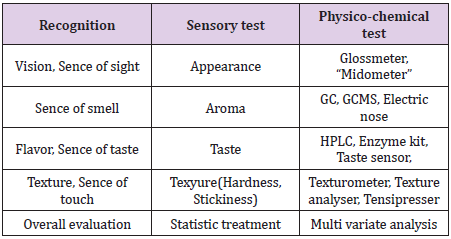
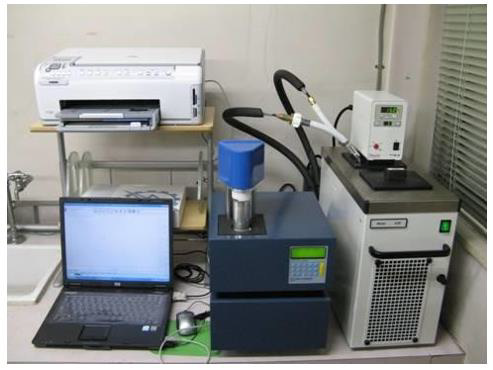
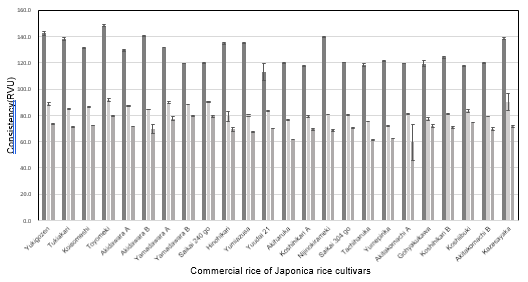
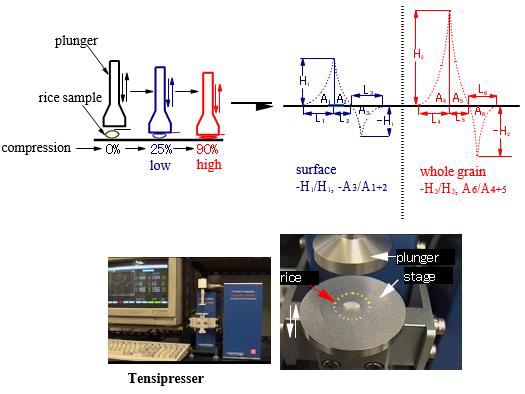
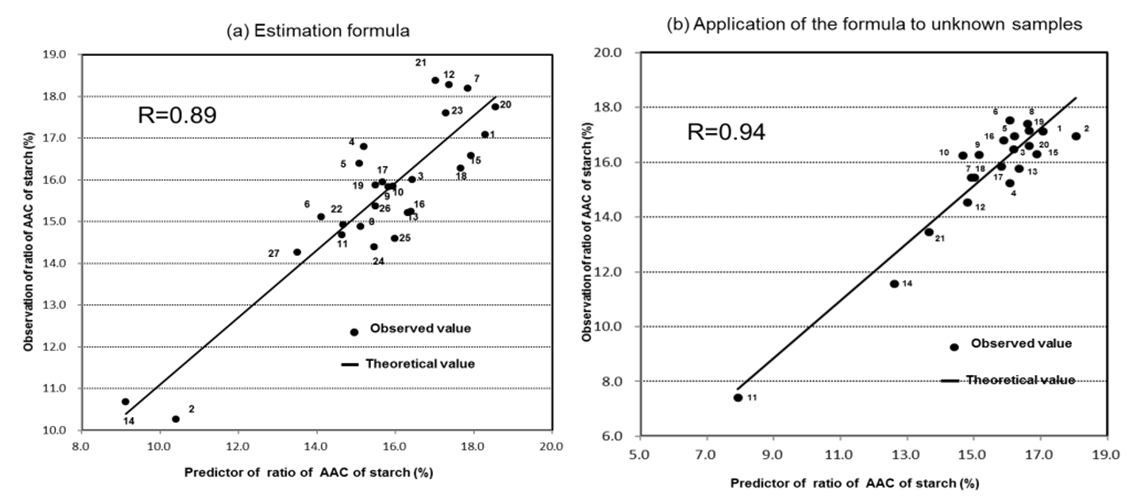
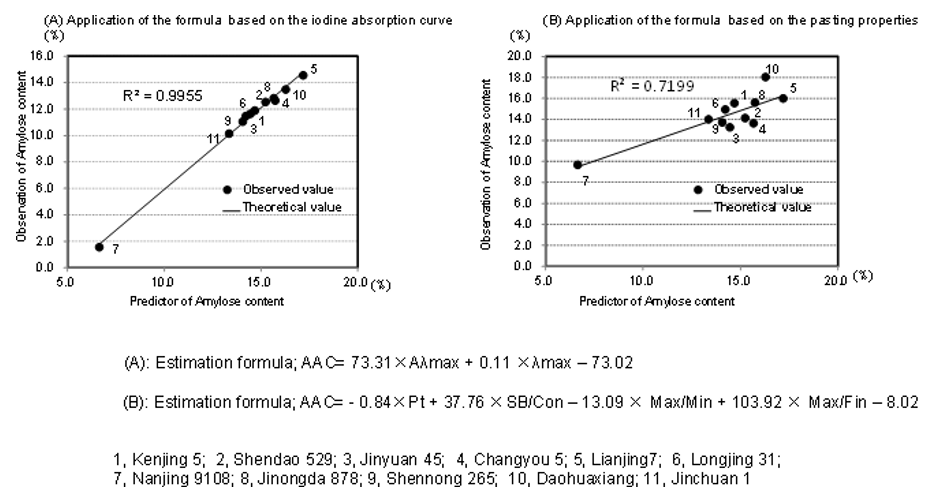
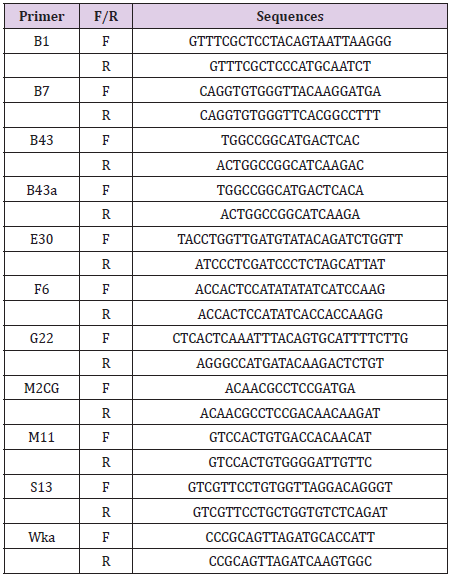
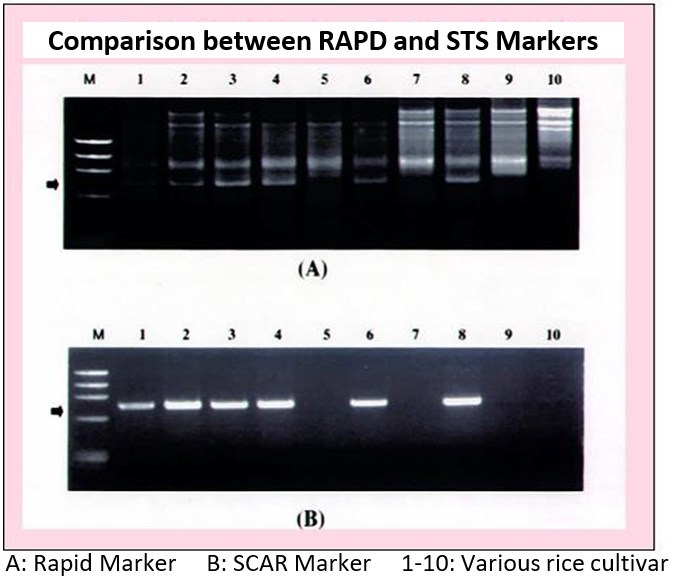
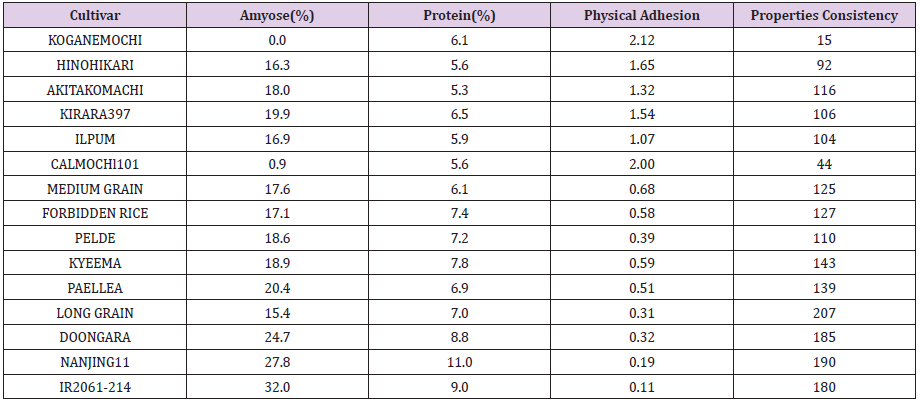
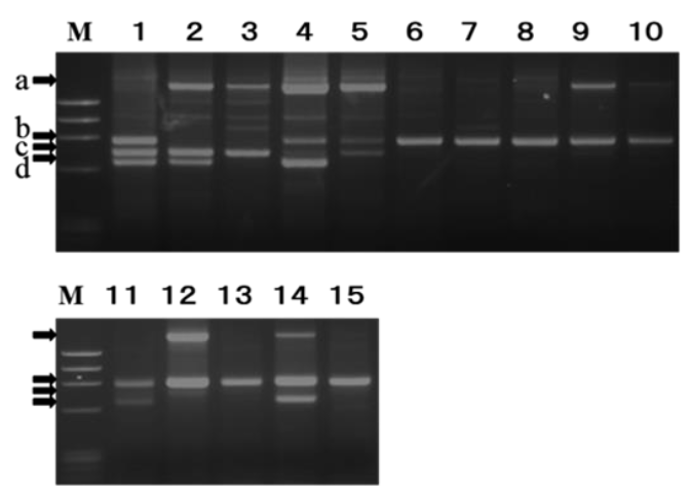
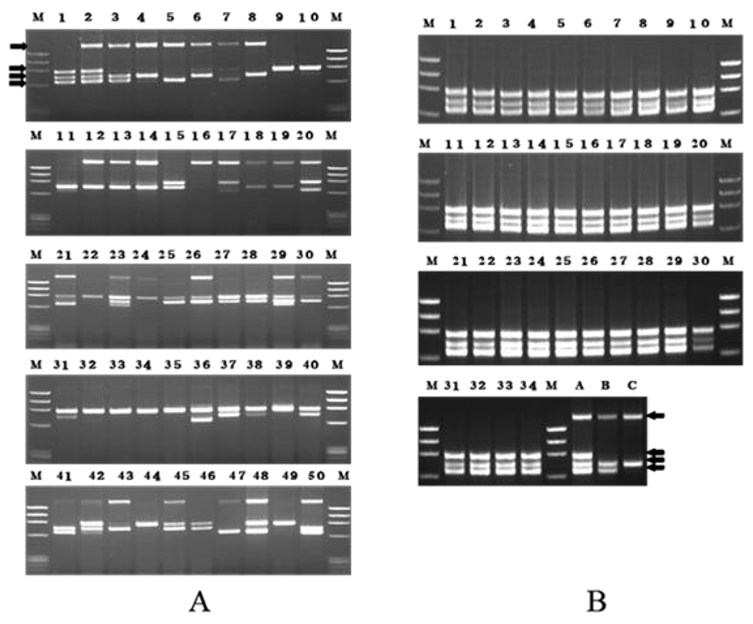
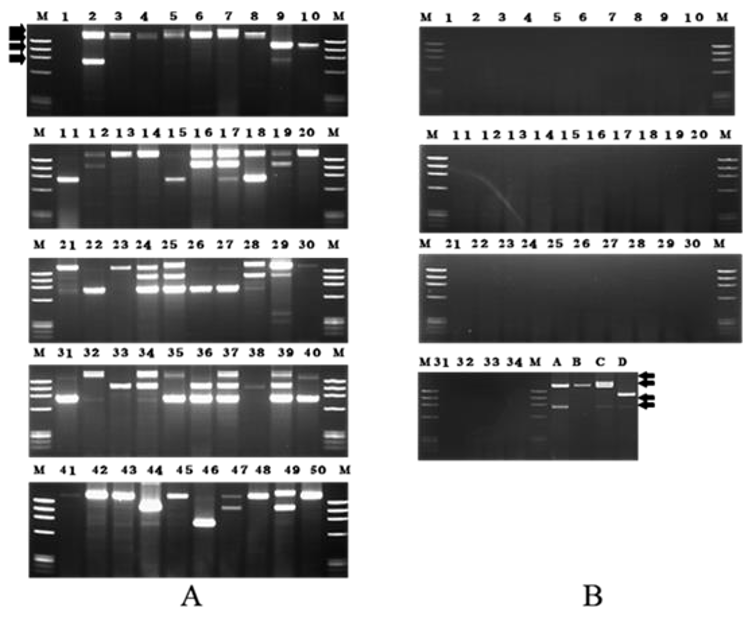
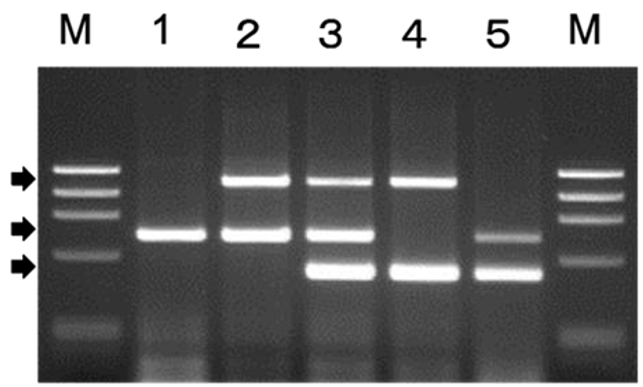
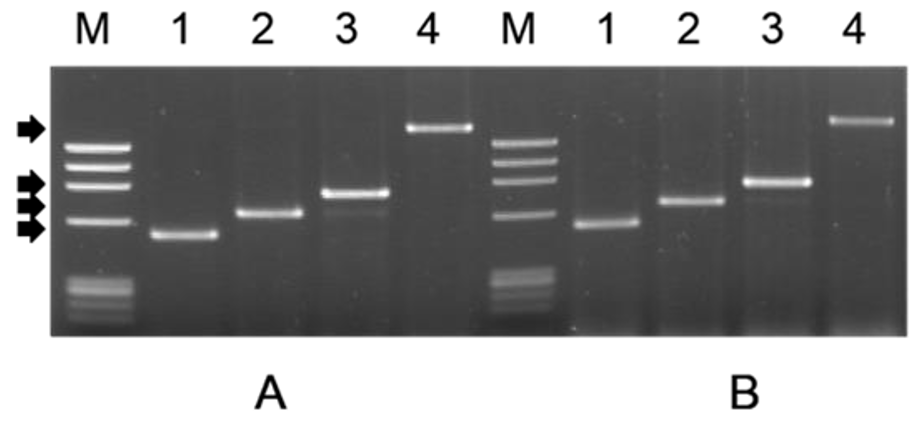

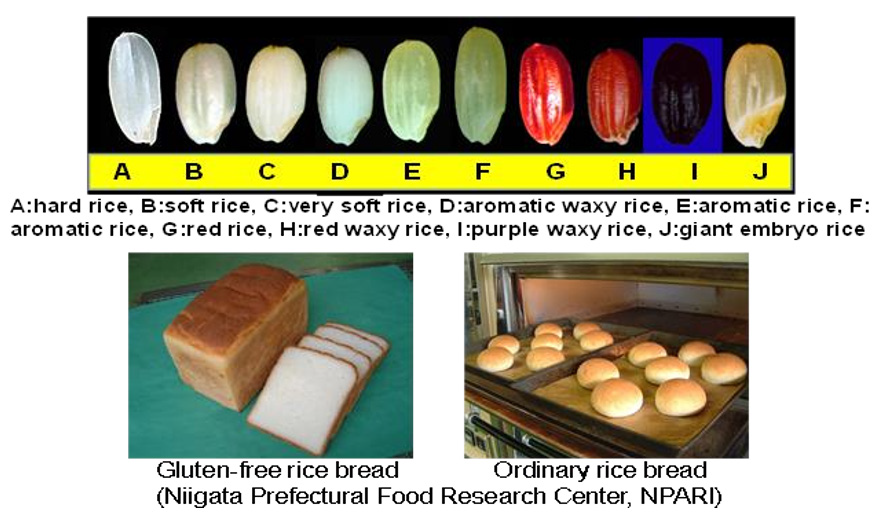
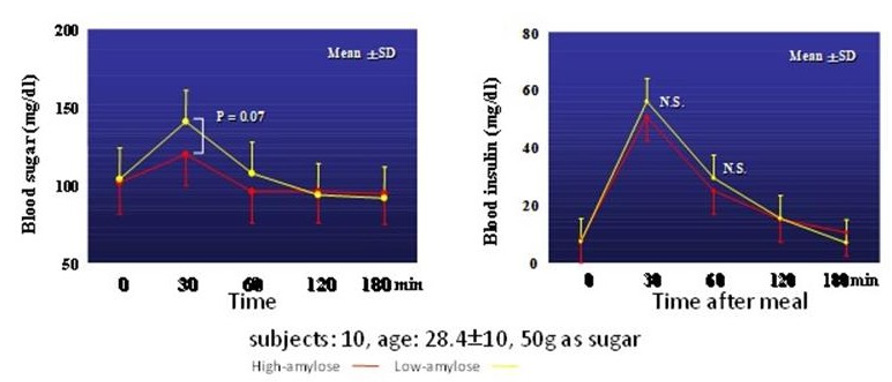
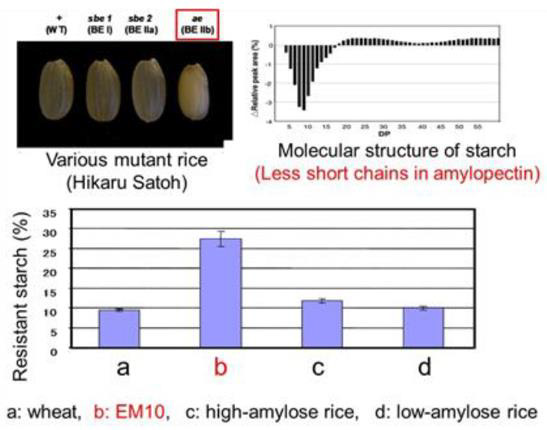

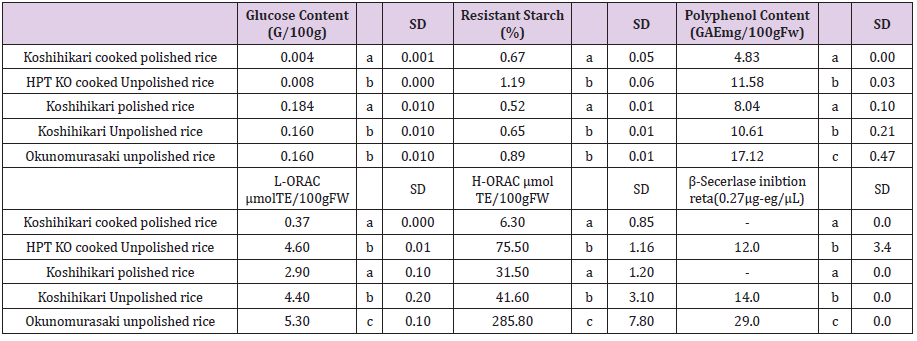
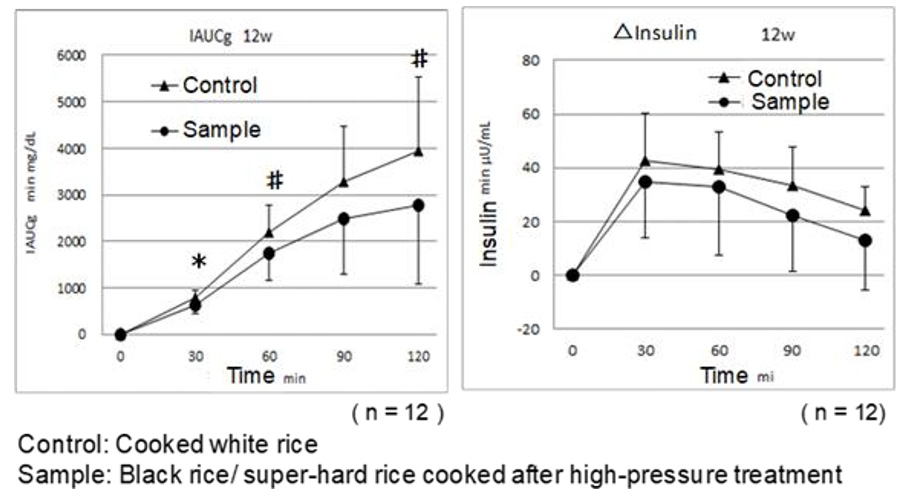
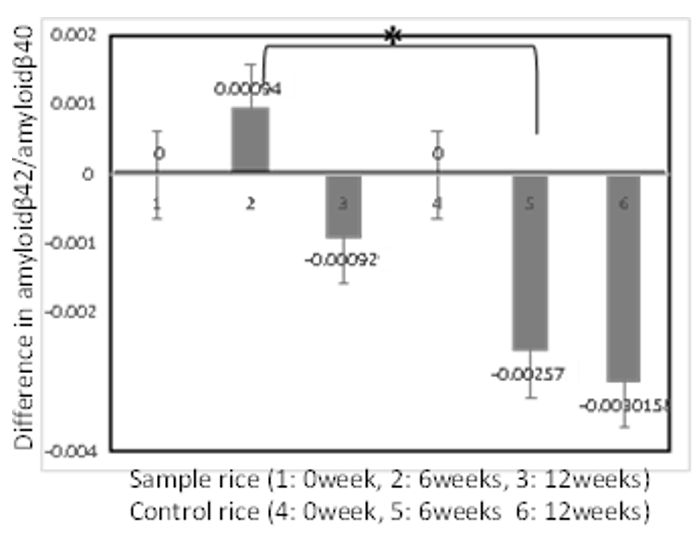


No comments:
Post a Comment
Note: Only a member of this blog may post a comment.